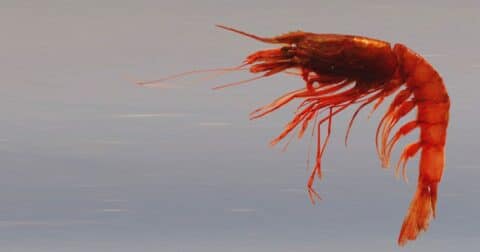Explainer
How Overconsumption Affects the Environment and Health, Explained
Climate•12 min read
Reported
In places with no enforceable limits on nutrient pollution, addressing the problem will remain elusive.


Words by Marlena Williams
Every summer, scientists with the Louisiana Universities Marine Consortium, or LUMCON, board a 116-foot research vessel called the R/V Pelican and venture into the Gulf of Mexico. Their mission: to monitor and collect data on the annual “dead zone,” the term used to describe areas of water that have hypoxia, or dangerously low levels of oxygen, along the northern Gulf’s continental shelf. So-called dead zones are caused by pollution from a few sources, including factory farms. The researchers expected bad news, but received even worse.
In June of this year, the National Oceanic and Atmospheric Administration (NOAA), which partners with LUMCON to survey the dead zone, forecasted an above-average hypoxic zone of 5,827 square miles. But when the R/V Pelican returned from her five-day research cruise at the end of July, scientists reported a dead zone that was even larger: approximately 6,705 square miles, equivalent to over four million acres of vital marine habitat.
The fish and bottom-dwelling species that live in this part of the Gulf cannot survive in hypoxic conditions and must flee to find life-sustaining conditions elsewhere. Those animals who cannot flee either die or suffer life-long physiological consequences. But the dead zone doesn’t just threaten marine species — it also upsets local economies and imperils already fragile coastal communities living along the Gulf. Climate change is likely to make the problem even worse.
The dead zone in the Gulf is the largest in the country and the second largest in the world, behind the massive, 63,000-square mile zone in the Gulf of Oman. The Gulf dead zone forms every year and can vary in size (the record was set in 2017, at 8,776 square miles). This year’s dead zone far exceeds the goal limits set by the Gulf of Mexico Hypoxia Task Force, a state-federal partnership working to reduce the zone’s five-year average. Though the task force is hoping to reduce the five-year average to 1,900 square miles or smaller by 2035, this year’s numbers are more than twice that, a startling reminder of the scale and complexity of the problem.
Though the dead zone forms each summer in the northern Gulf, the problem begins months earlier on farms in the American heartland. After rain or snowmelt, excess nutrients from fertilizer — including nitrogen and phosphorus — wash into the Mississippi watershed, eventually making their way to the Gulf. Once there, the nutrient runoff stimulates an overgrowth of algae, which consumes oxygen as it decomposes and sinks to the bottom of the ocean, depleting the supply necessary to maintain healthy marine life. Any creature who cannot escape that dead zone is almost certain to perish.
“One of the main species impacted is shrimp, which is a big industry in the Gulf,” says David Scheurer, PhD, an oceanographer with NOAA. “The area where the dead zone typically occurs is an ideal habitat for shrimp. When the dead zone is there, they can’t take advantage of the habitat and they have to flee to find where there is oxygen.”
In 2017, the habitat for brown shrimp was reduced by 25 percent as a result of that year’s enormous dead zone. The dead zone can have cascading impacts on local ecosystems and on the economy in Gulf states like Texas and Louisiana, where shrimping is a nearly $500 million industry, accounting for about 60 percent of U.S. shrimp production. In 2020, the Union of Concerned Scientists found that the dead zone causes an average of $2.4 billion dollars-worth of damage to fisheries and marine habitats each year.
Fish like crocker and red snapper are also forced to flee during the annual dead zone, which typically lasts from spring until September or October. Bottom-dwelling species that are unable to escape, like clams or worms, typically die due to acute hypoxia. In addition, sublethal hypoxia can make it difficult for animals to breathe, and in some cases lead to growth defects and reproductive issues over time.
“It’s complicated, because the more common effect of hypoxia on fish is not through fish kills,” NOAA scientist Alan Lewitus told the NOAA Ocean podcast. “It more commonly affects them through these sub-lethal effects and indirect effects that sort of cascade through the food chain, as well as sub-lethal effects of hypoxia exposure on reproductive impairments and reductions in growth potential.”
While many of the negative impacts of the dead zone are well-known and studied, this lag effect means it might take us years to truly understand the dead zone’s true impact.
“Groundwater discharge and legacy effects might take 30 or 40 years to make their way out of the system,” Scheurer says.
What’s more, as the planet continues to warm, the size and likelihood of dead zones is only going to increase, both in the Gulf and beyond. Warmer water generally holds less oxygen to begin with. When water is warmer, organisms tend to use up more energy, further stressing already-stressed ecosystems. And though it is unclear how climate change is going to impact precipitation levels in the Mississippi watershed, higher precipitation levels would mean more nutrients flowing into the Gulf from the Midwest, creating larger algae blooms each year.
One 2008 study found a steady rise in the number of global dead zones over time. That year, researchers detected 400 dead zones in coastal and marine estuaries worldwide, up from 305 in 1995 and 162 in the 1980s.
“Climate change is going to make dead zones as a whole more likely to form and worse,” explains Scheurer.
Reducing the dead zone requires a tremendous amount of coordination, effort and resources across states and agencies. The Environmental Protection Agency (EPA) first formed the Hypoxia Task Force in 2001 to study why dead zones form, create nutrient reduction guidelines for polluters and monitor nationwide progress over the years. The task force, which consists of state and federal agencies as well as Native American tribes, aims to shrink the average five-year size of the hypoxic zone by setting targets and reducing nutrient loading along the Mississippi watershed.
But it’s important to remember that agricultural practices remain the driving force behind the annual dead zone.
”You have an immense amount of fertilizer application for the corn crops and so forth,” Alan Lewitus said on the NOAA podcast. “Corn is actually a very inefficient plant in terms of using fertilizer, so a lot of it leaks out if not applied in a strategic way, and the nutrients are carried down the river into the Gulf of Mexico, where they stimulate algal blooms.”
To reduce the size of the dead zone, the Hypoxia Task Force builds models, implements technology that removes nutrients from the wastewater, helps farmers adopt practices that limit the amount of nutrients entering the waterways and encourages farmers to introduce conservation practices to improve water quality.
“The importance of the Mississippi River to the strength and growth of our states’ economies and communities cannot be understated,” Mike Naig, the Iowa Secretary of Agriculture, said in a statement. “By implementing our nutrient reduction strategies, the Hypoxia Task Force states are individually and collectively demonstrating our commitment to protecting and enhancing this working river.”
But because the current system is totally voluntary — meaning there are currently no enforceable state or federal limits on nutrient pollution — some advocates say success will remain elusive.
“Communities along the Mississippi River and Gulf coastal communities rely on a clean river, and without better nutrient management in the Basin, the states farthest downriver bear most of the consequences and will continue to do so increasingly into the future,” wrote the Tulane Institute on Water Resources Law and Policy in a paper outlining potential legal and regulatory solutions to the problem of hypoxia in the Gulf.
The Institute suggests using the Clean Water Act to declare portions of the Mississippi River impaired, and setting clear, tangible numeric limits on the amount of nutrient pollution farms can discharge into the waterway. Downriver states like Texas and Louisiana could work collaboratively with upriver breadbasket states through the Hypoxia Task Force and Clean Water Act to set and enforce these loading limits. If that fails, downriver states could bring legal action against the upriver states that contribute the most to the dead zone under a doctrine known as “riparianism.”
As of now, however, there is little support for this legal strategy. In 2016, the United States District Court for the Eastern District of Louisiana permitted the EPA to continue its voluntary approach to nutrient runoff in the Mississippi River Basin. Louisiana’s conservative Governor Jeff Landry has expressed no plans to petition the EPA or address the dead zone. Without clear, enforceable loading limits, advocates worry that the work of groups like the EPA and the Hypoxia Task Force will prove futile.
Not all nutrient pollution is the result of farming practices in the Midwest. Private fertilizer use, such as in backyards or on golf courses, as well as poor sewage management practices also contribute to the Gulf dead zone.
While dead zones remain a major global problem, there have been small successes in dramatically reducing the size and severity of dead zones in specific locales. In 2001, for example, a dead zone formed off Narragansett Bay in Rhode Island, leading to the “local extinction” of an estimated 4.5 billion mussels. Two years later, about one million fish were left gasping for oxygen after another hypoxic event, which became known as the Greenwich Bay Fish Kill. Researchers identified sewage spills in coastal waters as the leading cause of this particular dead zone.
In response, the state imposed regulations on sewage plants to reduce loading by 50 percent and built a three-mile underground pipeline to catch sewage and stormwater overflows during storms. While some low-oxygen conditions persist in the Bay, conditions have greatly improved in the ensuing decades — a reminder that, with enforceable limits and infrastructure solutions, it is possible to mitigate hypoxia.
Addressing factory farm pollution, however, has always been more challenging. Still, in the Chesapeake Bay region, efforts to reduce pollution from farm runoff have made some headway.
The dead zone in the Gulf is much larger than the one in the Narragansett, and its problems far more complex, implicating the massive uptick in hog factory farms in the Midwest and the 31 states that drain into the Mississippi — and the various state and federal agencies tasked with governing them. But with fragile coastal ecosystems and economies at risk, and climate change promising to make the issue even worse, the need for concrete action to address pollution from Midwest factory farms is becoming increasingly pressing.